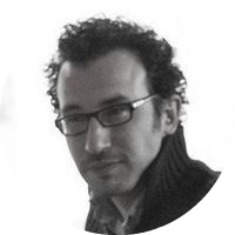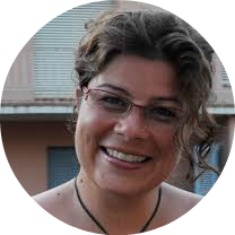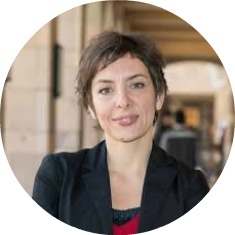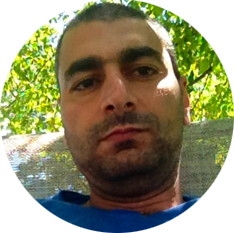Part I: Introduction
Malihe Razazan [MR]: Welcome! I am Malihe Razazan, and this is STATUS. On this edition of STATUS, we bring you an interview by University of California-Berkeley (UCB) Professor Samera Esmeir conducted with Professor Helga Tawil-Souri of New York University (NYU), who is the editor of the new book Gaza As Metaphor. They will be joined by two of the book’s contributors: UC-Santa Barbara (UCSB) historian Sherene Seikaly and clinical psychologist Dr. Said Shehadeh.
Gaza As Metaphor explores the contribution of Gaza to our understanding of exception, inequality, dispossession, and biopolitics. If Gaza is a metaphor for far away humanitarian disaster or a location of incomprehensible violence, it is--above all--an inseparable part of Palestine’s past, present, and future, and of the condition of dispossession. Stay with us.
Samera Esmeir [SE]: Gaza As Metaphor is a new book published by Hurst and released in the United States last month. It is an impressive and much-needed edited volume addressing the many layers of Gaza: its history, geography, peoples, tragedies, and perhaps most importantly, its capacity for action and resilience. The Gaza of this book is at once an object of inquiry, a territory of devastation, and a site of inspiration.
To introduce and discuss the book, I am pleased to have Helga Tawil-Souri with me on the phone from New York. Together with Dina Matar, Helga is the co-editor of Gaza As Metaphor. She is an associate professor of media and culture at NYU, and is also the director of the Kevorkian Center for Near Eastern Studies there. Her research interests include such topics as technology, media, culture, territory, and politics in the Middle East and Palestine. She has researched and written numerous articles on Arab media, as well as cultural territorial politics, checkpoints, identification cards, and other material objects.
Also with me on the phone are two contributors to the book. From Santa Barbara and Palestine, joining us are Sherene Seikaly and Said Shehadeh. Sherene Seikaly is an assistant professor at UCSB and a historian of capitalism, consumption, and development in the modern Middle East. She is the author of Men of Capital: Scarcity and Economy in Mandate Palestine. This book offers a historical and theoretical account of Palestinian businessmen, reformers of the domestic sphere, thinkers, scientists, and British colonial practices, while utilizing the lenses of political economy, cultural studies, and gender studies.
Said Shehadeh is a professor of clinical psychology at the Social and Behavioral Science Department of Birzeit University, Palestine. His past research examined the application of psychoanalytic theory on to the Arab South. He worked as a neuropsychologist at Jamaica Hospital in New York and at St. Jude’s Medical Center in Fullerton, California. His clinical and research interests focus on neuropsychology, emotional and physical trauma, resilience, and cross-cultural psychotherapy. Currently based in New York and Ramallah, Said is working on a clinical research project regarding Palestinian resilience under colonial occupation.
Part II: Samera Esmeir, Helga Tawil-Souri, and Sherene Seikaly
Samera Esmeir [SE]: Good to have you all with us. Let me begin with you, Helga. Could you tell us when and how the book was conceived?
Helga Tawil-Souri [HTS]: Thank you, Samera. Let me take a quick opportunity to say thank you for having us with you for this interview. It is a pleasure and honor to be interviewed by you as well. In terms of the inspiration for the book, on the one hand it was in the moment of the 2014 attacks--the latest so-called “war” on Gaza in the summer of that year--but it was also a much longer set of inspirations, questions, and desires. One particular node, if you will, that launched it all was actually a discussion with a colleague of mine who does not work on Palestine, but who often talks about Gaza in these comparative, yet very abstract terms. Seeing Gaza as a symbol or a metaphor for an open-air prison, for the ways in which urban warfare and control are waged today, an example of lawfare, or an example of what racism looks like in this day and age, Gaza is kind of a laboratory, as some people have called it.
In a sense, it was a desire to respond to that, but also a desire to explore: What is it about Gaza that does function metaphorically? But we also wanted to flip that on its head, and instead think of Gaza as a real place, approach it in its realities, and think about: What is it that Gaza itself as a real historical and a real territorial site? What does it actually teach us about these different concepts that are sometimes used to frame Gaza? It was those kinds of questions that led Dina and I to try to put this book together. On the one hand, it was trying to explore these metaphors of political resistance, neoliberalism, military technologies, colonialism, and these humanitarian crises or failures, but at the same time, a true desire to record, historicize, contextualize, and bring Gaza closer because of its increasing inaccessibility. Gaza is hiding behind a set of misrepresentations, mostly a set of stereotypes, assumptions, and fears.
[SE]: So, this goes to the book’s title, Gaza As Metaphor. Why Gaza As Metaphor? Why this choice?
[HTS]: I think it was in part because Gaza is such a rich site from which to understand many of the conditions of the world today. And by conditions, I mean political, social, economic types of conditions. I think there is purchase to using Gaza as a metaphor in these abstract ways. You say the word “Gaza” to people, and all kinds of terms are conjured up in one’s mind. But at the same time, because Gaza as a metaphor is also a play, in the sense that Gaza has become increasingly inaccessible, marginalized, and misunderstood, we wanted to portray what the realities of Gaza actually are.
[SE]: Helga, the sense that one gets when reading the book is that Gaza nevertheless continues to elude us. Metaphors are what make Gaza accessible, as you say and write in the introduction, but on the other hand, there is an excess of metaphors describing the fate of Gaza. We have zoos, archives, torture chambers, cysts, and so on and so forth. What does this excess in metaphors and of metaphors indicate to you?
[HTS]: I think it indicates a couple of things. It is a beautiful question. On the one hand, it indicates the inaccessibility of Gaza--that it does remain distant enough and able to make us imagine it continuously. I think, in part, it is removal from our everyday lives, the increasing impossibility of going to Gaza, and of course, the impossibility of coming out of Gaza. So there is a way in which its distance is productive of more and more metaphors. It continues in this sense to be misunderstood, but I think also this whole idea of metaphors is a way of making it more accessible and trying to understand it. I think the excess is also because Gaza is, in a way, very very rich, and it does have a very complex lived reality--whether we look at it historically, towards the future, or in the present term. Gaza does have so much to say about the conditions of the world today. And again, it is about those conditions: violence, the military, ongoing colonialism, poverty, religion, and all kinds of things. In this sense, it become this very rich site, even if it is also a real site.
[SE]: There was a line in your introduction where you speak of Gaza’s “sheer statistical impossibility,” and these are your words. I thought these three words, “sheer statistical impossibility,” captured volumes. Can you explain them? And if you could, can you also relate them to your own essay in the volume, which captures this small, enclosed, suffocated strip, on the one hand, but also this large, loud, productive, bountiful, and indeed “larger than life,” as you write, place?
[HTS]: There are a number of ways in which Gaza is talked about from the outside, represented, or as I said earlier, misrepresented. One of the ways in which we try to understand--whether in the mainstream media, academia, or all sorts of other environments--is through things like statistics. Statistics are one of those things that Gaza is often shrouded in. We have all these numbers about how many people are living under poverty lines, how much water is below international quality standards, how little electricity there is, how many people actually live there, what percentage of the population is kids, and these numbers are always thrown around.
On the one hand, they give us the sense of maybe somehow understanding Gaza. But, on the other hand, the book is a critique of looking at statistics as a means of trying to understand a lived experience. For one thing, statistics do not tell us very much about what real life is like. And statistics also sort of hide the historical context, the political context, and the reality. Sure, we can get caught in all the statistics about Gaza, but do we really know any more, specifically when we are sitting on the outside, about its lived reality, its history, the political conditions, and about what has actually made it into the place it is today.
[SE]: Indeed, your article does cover, try to bring to the surface, or to capture, in fact, how big that place is, such that it exceeds the statistics that only show enclosure, suffocation, and so on.
[HTS]: Right, that is what drove my own piece in the volume. Of course, Gaza is one of the smallest, confined, and dense places on earth. It does function as an open-air prison of sorts, other kinds of prisons, laboratories, zoos and all of these different metaphors. But at the same time, I tried to kind of think about how that, in and of itself, is actually a productive force. Just because something is territorially confined, does not mean that it is small. So I wanted to play with this idea. On the one hand, Gaza is filled with life, people, and experiences. But I also wanted to push that idea a little further and explore the extent to which Gaza seeps beyond these territorial confines that encumbered it. So I wanted to think of Gaza as a metaphor, as a site of study, as something we fear sometimes from the outside, as something misunderstood. But I also wanted to bring it back to what is actually going on within Gaza, the kinds of experiences and lives that are possible given the constraints that face the people there.
[SE]: What is truly magnificent about the book is the range of topics included, not to mention the accessibility of the articles to non-academics. There are twenty-one articles in three parts. Can you speak to the organization of the book and what it covers?
[HTS]: Sure. I think there was a very conscious decision on the part of Dina and I to try to have what we called an eclectic mix of people. We did not want it to be a mainstream academic book, even though we are both academics, but precisely to make Gaza more accessible through a range of different voices. People like Said, who are doctors and practitioners, people like Sherene who are academics but who can also write in an evocative non-academic way, and then people who are inside of Gaza, such as journalists. We wanted a range of different voices. It was really this attempt to capture the diversity, and the larger-than-life-ness of Gaza. That was a very conscious effort.
In terms of the organization of the book, it is always hard to decide how you are going to put things together, but in the end we decided for these four different sections. The first section was mostly focused on what living conditions are like in Gaza, whether in the present or in terms of how they relate to the past. That is really the first section of the book. The second is, in a sense, about the territory of Gaza itself, but also how that territory was produced so that the Gaza strip was not a place that existed beforehand, but it is a place that was created in 1948 and continues to be created as such. The second part is a set of articles that deal in part with the history of Gaza, but also with what the territory of Gaza actually looks and feels like in this day and age. The next section, which is called “Narrating Gaza,” was really about trying to think about the ways in which Gaza is often violently subjected in narrative, discursive, or visual forums. Gaza is often misunderstood, misrepresented, decontextualized, and inaccessible in that way as well. The set of essays there deal with Gaza’s representation in mainstream media, what kinds of language could we use to think about Gaza, with what kinds of language or discourses could we use to perhaps free Gaza from this set of constraints that it faces. The last part is the way in which we saw the set of essays as responding to the question of: What does Gaza teach us about the world in which we live in today? It is an attempt to situating Gaza within these larger questions about war, Zionism, different sorts of territory, and history. I think of Sara Roy’s piece in relation to what it means to be children of Holocaust survivors. So the last section is about Gaza as it intersects with bigger histories and bigger sorts of questions.
[SE]: This last part also concludes with Sherene Seikaly’s article. Sherene, your article was also written around the 2014 war on Gaza, and you attribute to that moment the power to conjure, to summon other moments in time, but also in space. Can you offer a few examples of this power of Gaza to conjure, which is perhaps the superpower of powerless Gaza?
[SSY]: Thank you for having me here. It is a great honor. I wrote this piece as the assault on Gaza was happening in 2014. At the time I was in Cairo, and I was trying to understand: How is it that each of the images of loss that I consumed over social media felt so deeply personal, as if they were happening to me? And there was one particular image that I began the piece with of a man and his son sitting on two cement blocks, and they are amidst the rubble of what was their home. It seems to me that this image had an immense power over me because it spilled beyond the specific site and space that it was in, and really evoked, for me, what was the broader Palestinian condition. As we saw the events unfold, it seemed to me that that summer conjured both moments of intense colonization as well as moments of intense attempts to decolonize.
On the one hand, I felt that for those of us who have been subject to this history, the moment conjured formative catastrophes like that of 1948, catastrophes like that of the Qibya massacre of 1953, the Sabra and Shatila massacres of 1982, and then the more mundane instances, such as house demolitions, land expropriations, and targeted assassinations, which have shaped what it means to be Palestinian arguably since the early twentieth century. But then the other thing that happened that I felt that Gaza also evoked, and maybe this is the superpower, was the way, particularly after the Israeli police found the tortured and burnt body of Mohammad Abu Khdeir, people across the Green Line stood up and basically had an uprising against the Israeli army and police. That conjured various moments of uprising and decolonization from the first Great Revolt in 1936 to the various instances of guerilla attempts to resist in the 1960s-1970s, to land day in 1976, to the first and second intifadas. So, for me, the argument here was that Gaza in 2014 was not an exception. It was part of a broader archive.
[SE]: So Gaza in 2014 crystallizes a longer Palestinian history. Can you speak in more detail, for example, about the relationship between Gaza in 2014 and the 1936-1939 revolt, which you mention in your article? Could you give our listeners more detail about the kind of connections you find between the two moments?
[SSY]: Sure. I think one of the things that is important to note about this moment is how it spoke to Palestinians and Arabs, but also how it spoke to people internationally. I think it is important to remember that the killing of Michael Brown and Ferguson was happening around the same time, and the kinds of alliances that were built around that were very interesting and powerful.
In terms of Gaza’s resonance with 1936, I think in the present moment with a lot of the activist organizing internationally--particularly around the Boycott, Divestment, and Sanctions (BDS) movement--it is very important to remember that in the 1930s, Palestinians actually organized a national boycott of both British and European Jewish goods because this was a very intense moment of mobilization that really targeted and opposed British colonialism and Zionist settlements. I think this it is very useful to think about: What kind of organizing would have to take place for there to be a national boycott in the 1930s? It is really remarkable. Then, after six months of national boycott, the Palestinians’ sustained three years of armed resistance. It is one of the first instances of guerilla warfare we have that was anti-colonial, and it really challenged the British-Middle East forces in the Middle East at that time. It drained them.
I think this is another important thing to think about Gaza 2014: At the time, Hamas basically decided not to fall prey to the logic of agree now, negotiate later, and they posed a military challenge that--in terms of what has happened in the past--was actually much larger. While there is no way to ever compare Hamas to the kind of military superiority that Israel has, it is a very important instance of that will and capacity to resist in the force of a power that is so much larger than you, that is so much better equipped, and that has so much more capital and military power.
[SE]: Your article is titled “Gaza as an Archive,” another metaphor for Gaza. And you write towards the conclusion of your article, “Gaza 2014, in its continuities and ruptures, is an instance of the archive that is the Palestinian condition.” Tell us more about this archive, or the idea of the archive that is the Palestinian condition, that you try to develop in your article about Gaza.
[SSY]: What for me was a powerful way to think about this moment and to survive the deep challenge that is posed for all of us, was to think about again how this particular instance conjured all these various moments, and how all of these various attempts at decolonization are actually resisting the possibility that Palestinians could never exist. What I am trying to suggest here is that it is not just active resistance that is expressing this Palestinian condition, it is also the very possibility of archiving, the very possibility of putting together these moments. I think the humiliation of these historical experiences of both colonialism and decolonization does this work, and that the archive is one of destruction and uprising, death and life, loss and accumulation. It is for these reasons that I think that Gaza is not exceptional, but it is actually one instance of a broader condition that is the Palestinian condition.
Part III: Samera Esmeir and Said Shehadeh
Malihe Razazan [MR]: You are listening to Professor Samera Esmeir’s conversation with Professor Helga Tawil-Souri and Professor Sherene Seikaly about the new text Gaza As Metaphor. The book explores what Gaza contributes to our understanding of exception, inequality, dispossession, and how Gaza is a metaphor for far away humanitarian disaster or a location of incomprehensible violence.
Samera Esmeir [SE]: Let me turn to Said Shehadeh. Said, conventional views on trauma posit the experience of trauma that a person or a collectivity undergoes as an experience that is external to the force that unleashed trauma. In Gaza’s case, the conventional view of trauma would posit trauma as a side effect of war. But your argument in your article in this collection on Gaza departs from this wisdom significantly. You suggest that the Israeli war on Gaza was “designed to engineer trauma on a massive scale, and amounts to mass torture.” Can you elaborate on this argument and how do you see this engineering of trauma unfolding and taking place?
Said Shehadeh [SSH]: Samera, thank you for having me. I am honored to be on this call and also to be part of this great set of writers and this book. When talking about trauma maybe I can just frame it. Usually references to trauma or traumatic experiences somehow imply that people are dying as well as suffering from post traumatic stress disorder or some other psychiatric problems as a result of some form of extreme stress or suffering. I just want to make clear that the point I try to make in this essay is really to talk about the intended effect of the colonial order, the occupier: Israel, in this case. What was the intended suffering that was caused? This is from testimonies and experiences I gathered by talking to people coming out of Gaza, trying to learn from their experiences, and see what their lived experience was.
In terms of looking at the feelings that were generated by the psychological realities, usually when people talk about the realities of war in Gaza, they mention the numbers of casualties, the number of buildings destroyed, the infrastructure, and the statistics of children and women. But what is not captured in this data is the reality on the ground, the sense of helplessness and hopelessness, and the idea that nobody will be able to help them. If we systematically look at the type of assaults that were engineered on this enclave, on this enclosed population, you would see that there are a lot of the same experiences we see in interrogation settings. And that is where I call upon the metaphor of torture or the idea of mass torture, because a lot of the experiences of Gazan during the war was that of extreme fear for their lives, not having any control over their lives, and the sense of uncontrollability and unpredictability. There is also all of this physical destruction in their lives, including sleep deprivation, exposure to dead bodies, not allowing people to be evacuated, and not allowing bodies to be removed from the streets in a way that increases the intensity of the psychological horror for people living there.
The only sense I have from any purposeful reasoning for having these assaults on a prolonged scale is really to try to break the spirit of Gazans during the war. And by the spirit of Gazans, I mean the spirit of resistance, the unbreakable sentiment. Even the most affected Gazans that came out of Gaza actually went back to live in these conditions. They all had the sense that they were on the right side of justice and that what they were refusing, in many ways, was this control by Israel--almost totalitarian control--over their lives. And, even though the vast majority of Gazans were not actively involved in resistance, just the ability to stand with the resistance and to defy Israeli colonial control over their lives is a sign of sumud, or steadfastness, to endure the torture of the occupier and to be able to stay resistant to it.
[SE]: Said, you point to what you call a “paradigmatic shift” in the colonial policy of Israel toward Gaza, that the 2014 assault was significantly different from past assaults. Can you explain this difference more? You write that there is a shift from managing and controlling the resistance to attempts at destroying it psychologically, mainly by breaking the Palestinian psyche.
[SSH]: Yes, this is my attempt to try and make sense of horrifying events that are actually hard to understand the reasons for. It is really trying to understand what the objective was from all these mainstream media statements made by Israeli politicians and news people. For weeks on end there was this ongoing empty debate within Israeli media that brought all of these different experts on to try to understand: What exactly was the objective? There really was no clear military objective in terms of the bombings and bombardments that happened and were ongoing. Once you destroy the infrastructure, schools, mosques, and buildings and you keep bombing them over and over again, the only thing that makes sense, in terms of the continued bombardment of the population, is that it is being used as a form of punishment, as a form of pressure to denounce Hamas, to come out to the street against the resistance, and to be against Hamas--the party that is ruling Gaza and is also the voice of resistance during the war.
In many ways, these calls made throughout the Israeli media, a lot of the pamphlets, text messages, and targeted messages from the Israeli secret service, were calling on Gazan people to come out and were putting pressure on them to collaborate with the occupation against their fellow Gazans. On the other hand, these messages were also intended to have Gazans come out, put pressure on Hamas, and go against the idea of resistance. From here it is really a matter of reading between the lines and seeing that there is no real military objective except to try and get the population as a whole in such a broken mental state that they will no longer be able to sustain their resistance. Seeing that they were not able to break the military resistance, I think the only thing that was left at that point was to try and break the population.
[SE]: You have a very evocative sentence. You write, “The elimination of the natives’ resistance was deemed largely an aspirational goal without committing genocide proper.” I thought that sentence was very telling, but let me move now to the title of your essay, which is “Ghazeh el-Sumud,” or in English, “Gaza As Resilience.” This title and the concluding paragraph of your essay, and even the subtext of the essay, compliment but also depart from other metaphors used in this book, such as the zoo, the open prison, and so on. The metaphor of sumud, or resilience, shifts the perspective of the reader from what Israel does to how Palestinians live, respond, and act.
I want to read the last few lines from your essay and invite you to offer some thoughts. You write: “Gaza is a model for steadfastness and resistance against violent colonial occupation, which Gaza imparts to us after paying the ultimate price in bloodshed, pain, and suffering. It would behoove us, then, to learn from Gazans how to be resilient and protect our communities from extreme political trauma, however meticulously engineered by Israeli war generals.” Now, I wondered: What are your thoughts about resilience? And is this the only answer to mass trauma and torture? Or perhaps, to put the question slightly differently, are you suggesting that resistance is indeed not only legitimate effort, but is in fact a necessity and the only answer to mass trauma?
[SSH]: Absolutely, I think I would agree with that. The context of everything we are talking about is the context of colonial occupation, occupation that is here to replace us Palestinians living on the land. I think, especially in that context, what is left in terms of dealing--whether we are talking about coping as a community or individuals, psychologically or socially--is really a matter of responding to that colonial occupation. There might be different schools or approaches especially here in Palestine, some of which might choose to look at Palestinians in general, and specifically Gazans, as victims of war or a humanitarian crisis, or people who were bombed mercilessly into being mentally broken down. But--although I was not able to go into Gaza and experience it myself during or after the war--from what I saw, from the Gazans that I did meet and from colleagues that actually went there, interacted, and worked with Gazans on providing psychosocial support, you did not see this mental breakdown that I think was intended by this whole war campaign. You did not see people tearing into the fabric of the community.
On the contrary, people were able to come together, deal with humor, and deal with generosity and benevolence between them. They were able to come together really and help each other in many ways. You would see that in the hospitals, where they would come and offer each other help. That is the model, as far as I am concerned. At that time, I was coming back to Palestine, to the homeland, after a decade of not being there, and you are really humbled by the strength of people that go through an experience like that. I figured that there is a lot for us to learn from it. I think the choice, specifically for sumud as a metaphor, is particularly appropriate because sumud is a concept that originally was used in terms of being able to resist the torture of interrogators in prisons. Gaza in many ways turns into a torture chamber where they are trying to break the spirit of resistance to this colonial occupier.
I think the intended goal is for all Palestinians to give up this dream of liberating Palestine and resisting Israeli colonialism. Gaza is the place that is the symbol of that. That is where the war around the issue of resistance is today. There are pockets in the West Bank and within 1948 Palestine that have periodic and sporadic resistance to the occupation, but really Gaza is the place that has this more elaborate, more theatrical, more pronounced type of resistance that I think the occupier is very much concerned about. That is why they are trying very hard to break it. Because once they break Gaza’s sumud, I think the rest of Palestine will fall in that sense that the most resistant of Palestinians will be broken up or will have given up the idea of resistance. But I think there is a lot for us to learn so that we can grow as strong as Gaza is.
Part IV: Conclusion
Samera Esmeir [SE]: Let me conclude now with this moment in time. With 2016, Palestinians have once again commemorated the 1948 Nakba. Some did so as if it was an event of the past, and others used the calendar date to highlight the Nakba as an ongoing condition. What are your thoughts on Gaza during the week of Nakba? We can begin with Sherene.
Sherene Seikaly [SSY]: As you said, for me it is about the emphasis on its ongoing nature, which speaks to the point I was suggesting earlier. It is about the kind of conditions and the ongoing struggle against what is now a century-long effort to resettle and colonize Palestine. I also think it is very important to think about the Palestinian nakba in the context of the Syrian nakba, the Iraqi nakba, and the Yemeni nakba that we are in at this moment, and to really think through the possibilities of solidarity for the future.
[SE]: Helga?
Helga Tawil-Souri [HTW]: I think I would echo a lot of what Sherene has said. On the one hand, I recognize that there is an importance to that date, but there is also importance in moving away from that number and recognizing that this is a moment in a much longer history. We should also not fall prey to marginalizing Gaza even more because of the other ongoing catastrophes that Sherene just alluded to. A lot of the world’s focus today is on what is going on in Syria and Iraq, and thus, people forget about Palestine and Gaza even more. We should make sure that when these commemorative events take place--even when they are negative, if I can call it that--we also position what needs to be remembered in a larger context.
[SE]: Said?
Said Shehadeh [SSH]: I agree with everything that was said. I just would add that the idea of commemorating an event in history as big and monumental as the Nakba implies that the Nakba is done, it is over, and we are revisiting it by memory and our spirit. I think in many ways this is not the case. The Nakba is an ongoing event that has not ended over the past sixty-eight years. I was able to experience the commemoration of Nakba Day here in Palestine, and I think it is unfortunate, in many ways, the shift that you are starting to see more. It is very disconcerting that the commemorations are starting to become more like cultural events, and you have all kinds of singers and people who go out to the street and look at it, in some ways, as if it is a done deal or something in our past. It is not seen as an opportunity to reignite the resistance, to continue the liberation of Palestine, or just to stop deluding ourselves into thinking that it is an event in our history. It is an ongoing event.
Malihe Razazan [MR]: Helga Tawil-Souri is an associate professor of media, culture and communication at NYU, and the co-editor of the recently published volume Gaza As Metaphor. Sherene Seikaly is an assistant professor of history at UCSB. She is the author of Men of Capital: Scarcity and Economy in Mandate Palestine. The book examines British-ruled Palestine in the 1930s and 1940s through a focus on economy. Dr. Said Shehadeh is a clinical psychologist. Dr. Said Shehadeh and Professor Sherene Seikaly are two of the contributors to the new book Gaza As Metaphor. The book explores what Gaza contributes to our understanding of exception, inequality, dispossession, and how Gaza is a metaphor for far away humanitarian disaster or a location of incomprehensible violence. For STATUS, I am Malihe Razazan. Thanks for listening!














